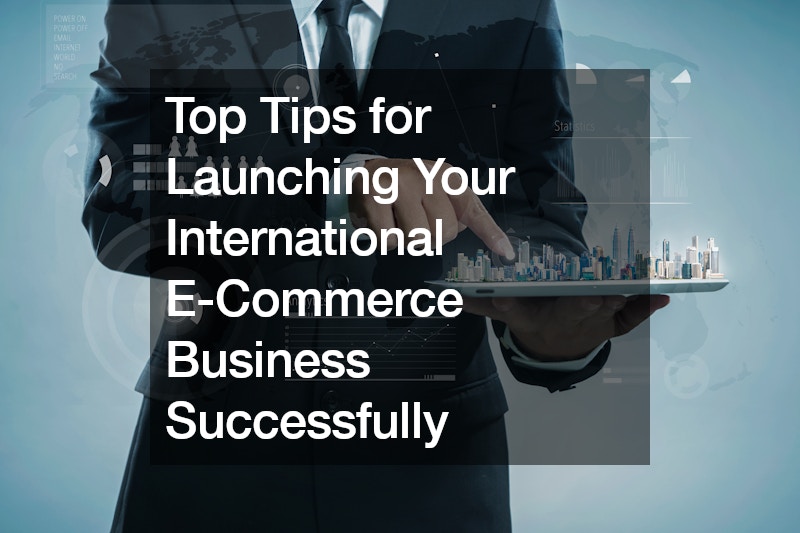Launching an e-commerce business is an exciting endeavor, especially when aiming to tap into international markets. However, it requires careful planning and strategic execution to ensure success. Whether you’re just starting out or looking to expand globally, here are some essential tips to guide you through the process:
1. Research Your Target Markets
Before diving into international waters, it’s crucial to conduct thorough market research. Start by analyzing your current website traffic using tools like Google Analytics.
This will provide insights into where your visitors are coming from geographically. Understanding your existing customer base can help you identify potential markets for expansion.
Additionally, analyze your sales data to pinpoint which countries are already purchasing your products. This data-driven approach will highlight regions with existing demand, making them prime candidates for your international expansion efforts.
Furthermore, leverage tools like Google Trends to assess market trends and consumer interest in your product category across different countries. This will help you gauge whether there’s a growing demand for your offerings in specific regions.
2. Website Localization
Localization goes beyond simply translating your website content. It involves adapting your site to resonate with the cultural preferences and language nuances of your target markets. This includes translating not only text but also images, colors, and even emojis to ensure they align with local preferences.
Investing in a reliable website translation solution can streamline this process significantly. Platforms like Weglot, for instance, automate the translation of your website while maintaining SEO best practices and ensuring a seamless user experience across different languages.
Remember, localization isn’t just about language; it’s about creating a user-friendly experience that feels native to your international customers. This attention to detail can significantly enhance your brand’s appeal and credibility in new markets.
3. International Payments
Facilitating smooth and convenient payment options is crucial for converting international visitors into customers. Different regions prefer different payment methods, and offering a variety of options can reduce cart abandonment rates significantly.
Research popular payment methods in your target markets and integrate them into your e-commerce platform. Options may include credit cards, PayPal, local bank transfers, and digital wallets like Alipay or WeChat Pay, depending on the region.
Moreover, implementing a currency converter on your website helps customers understand the cost of your products in their local currency. This transparency eliminates confusion and builds trust, ultimately improving the likelihood of completing a purchase.
4. Global Logistics
Efficient logistics are vital for fulfilling orders and delivering products to your international customers on time. Depending on your business model and budget, you can choose between various shipping methods:
- International Shipping: Directly shipping products from your home country to customers worldwide. This option requires understanding international taxes, customs duties, and shipping regulations.
- Fulfillment Providers: Partnering with third-party logistics (3PL) providers who store your inventory, handle packaging, and manage international shipping. This option can streamline operations and reduce shipping costs and times. Global fulfilment solutions like these offer scalable options for businesses looking to expand their reach without the complexities of managing logistics in multiple countries.
- Local Manufacturing: Setting up manufacturing facilities or partnerships in target markets to reduce shipping distances and costs. This approach also enhances your brand’s local presence and reduces logistical complexities.
- Inventory Holding: Establishing warehouses or storage facilities in different countries to hold inventory closer to your customers. This can lead to faster delivery times and lower shipping costs.
Each method has its pros and cons, so choose one that aligns with your business goals, budget, and long-term strategy for international growth.
5. Customer Support
Providing excellent customer support is crucial for maintaining customer satisfaction and loyalty, especially in international markets. Consider offering multilingual support options, such as translated FAQ pages and customer service representatives fluent in different languages.
Furthermore, be mindful of time zone differences when offering support to international customers. Timely responses and clear communication can significantly enhance the overall customer experience and mitigate potential language barriers.
By prioritizing customer support and ensuring a seamless post-purchase experience, you can build trust with your international clientele and encourage repeat business.
Closing Thoughts
Launching and scaling an e-commerce business internationally requires careful planning, attention to detail, and a deep understanding of your target markets. By conducting thorough market research, investing in website localization, optimizing international payments, strategizing global logistics, and prioritizing customer support, you can position your business for success in the global marketplace.
Remember, each step plays a crucial role in enhancing your brand’s visibility, accessibility, and credibility among international customers. With the right approach and perseverance, your e-commerce business can thrive on a global scale, capturing the attention and loyalty of customers worldwide.
.


